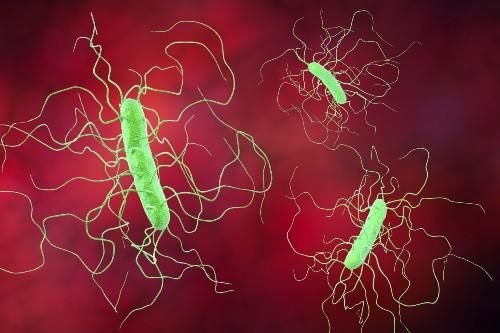C diff Risk Increases with PPI Usage
According to one new study, proton-pump inhibitors (PPI) exposure demonstrated a moderate increase in the risk of community-acquired C diff infection.

This article Elevated Risk for C diff with Proton-Pump Inhibitor Use, originally ran on HCPLive.
A nationwide study in Denmark demonstrated there was a moderate increase of risk of Clostridium difficile (C diff) in patients being treated with PPIs.
The findings were published in a paper in Clinical Infectious Diseases.
Investigators from Copenhagen, Denmark used a nationwide cohort of adults with C diff infection in order to compare periods with and without exposure to PPIs. The adults were all treated between February 2010 and December 2013. The nationwide database included health information such as C diff testing, filled prescriptions, and patient characteristics. The investigators also accounted for previous hospitalization in the previous 12 weeks in the patients, in addition to chronic disease, genetics, socioeconomic status, length of hospital stay, and antibiotic and corticosteroid use.
Ultimately, the study authors identified 3583 episodes of community-acquired C diff infection, of which 964 occurred during current use of PPIs. This is an observation in the current literature, but what wasn’t understood was the full extent of the relationship due to missing data from randomized controlled trials, variability between studies, and insufficient adjustment for confounding.
“While a history of prior hospital admission, advanced age, and antibiotic use are well-known risk factors for C diff infection, the role of PPIs has remained controversial,” the study authors wrote.
The investigators defined new PPI use as a new prescription for individuals who had not used PPI in the prior 365 days. They split up the periods of 0-6 months and 6-12 months because in the first period, cessation was considered indeterminate use because of the possibility for intermittent use or drug exposure continuing beyond the use period. Exposure during the 6-12 month period was “unlikely.”
Of the infections that occurred with use of PPIs, 324 occurred within 0-6 months after treatment conclusion. Additionally, 123 cases occurred between 6 and 12 months after treatment cessation.
The remainder of C diff infection cases occurred during time periods without use of PPIs, the investigators said.
Comparing use of PPIs with nonuse, the study authors found that the adjusted estimate incidence rate ratio (IRR) was 2.03, they said. But the risk remained elevated in later time periods too: 1.54 for 0-6 months, and 1.24 for 6-12 months.
“In conclusion, in this nationwide study in Denmark, we showed that exposure to PPIs was associated with a moderate increase in the risk of community-acquired C diff infection,” the study authors said, , while noting that the mechanism by which PPIs may increase the C diff infection risk remains unclear. “The increased risk was most prominent during current PPI use but also persisted after treatment discontinuation.”
One limitation the study authors provided for was that initial symptoms of C diff infection could have been misinterpreted and patients prescribed PPIs could not be excluded. But, they also admitted, “it is unlikely that this would lead to biased results because the symptoms of C diff infection (diarrhea) are distinct from the upper gastrointestinal symptoms that represent the most common indication for PPIs.”
